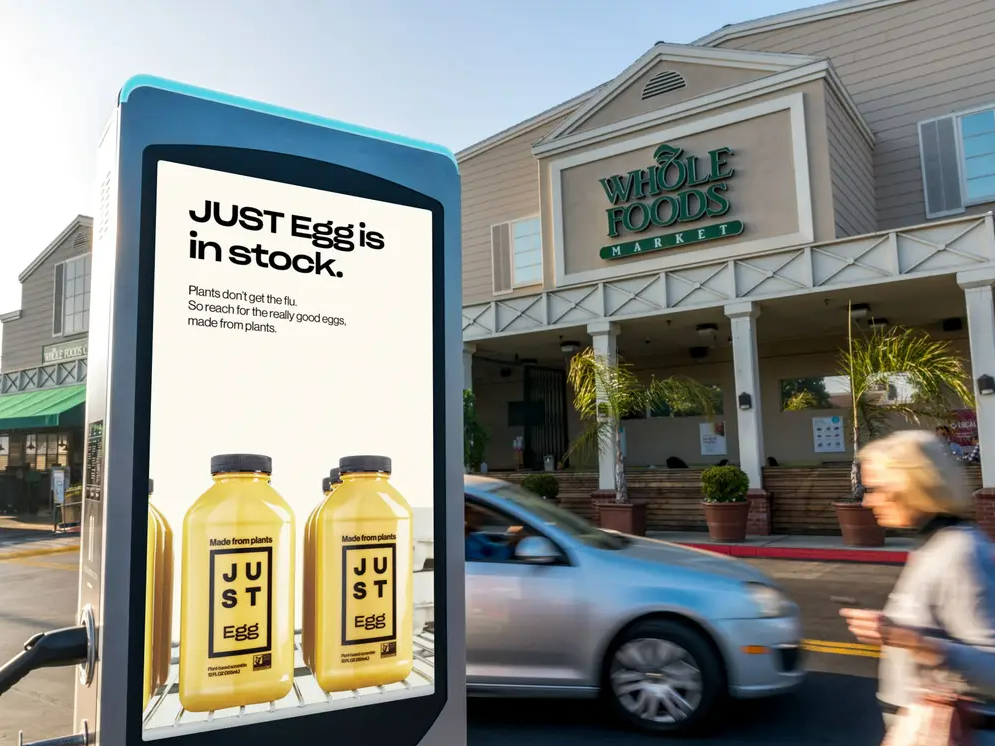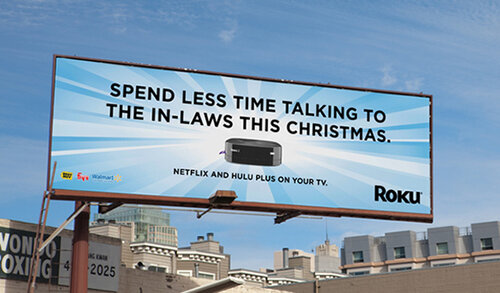Technology
Services
Resources

Digital out-of-home (DOOH) is making quite a splash in the world of advertising. As of 2022, the global DOOH market was valued at $18.80 billion, and it’s forecast to reach $58.67 billion by 2030. That’s an increase of more than 212%!
With the many benefits the channel offers, it makes sense that it’s experiencing rapid growth. DOOH allows advertisers to connect with audiences when they’re outside of their homes, in contextually relevant environments, when they often don’t have their eyes glued to their phones (but do still have them handy to interact with elements like QR codes). Put simply, when used as part of a holistic omnichannel strategy, digital out-of-home allows advertisers to reach audiences in key moments of impact.
And, thanks to its digital nature, DOOH allows advertising teams to harness the latest innovations in adtech to maximize their return on ad spend (ROAS). From its targeting, personalization, and reporting capabilities, to the real-time bidding and automation offered by programmatic DOOH (pDOOH), this channel combines the best qualities of OOH with the power of digital advertising.
Even more, DOOH is ripe for creativity. We’re talking big, bold messaging, compelling carousels of images, mesmerizing motion, and more. After all, these are messages that people are often seeing on their way from place to place—what better opportunity to have fun with the creative elements to capture their attention?
Today, we’re sharing several of the most compelling digital out-of-home ads we’ve seen, and digging into why they stuck with us. Whether they succeeded due to a strategic use of video or a humorous approach, or by tailoring relevance to the specific moment, advertisers can learn a lot about the DOOHs and DOOHN’Ts of DOOH (sorry, we couldn’t resist!) from these ads.

Remember when the price of eggs skyrocketed last year? While we were panicking about the future of omelets and quiches, the company JUST Egg saw an opportunity. They ran DOOH ads for their plant-based eggs, using messages like “Plants don’t get the flu” to elevate their product and brand at a strategic moment when the alternative (i.e., chicken eggs) was less available.
JUST Egg placed their messages in high-traffic, public places where they were truly relevant (think outside of a grocery store, or near a major shopping center). And, since they chose to use DOOH rather than a traditional OOH billboard or urban panel, they were able to leverage messaging that was relevant for a specific moment, and to make creative adjustments easily—by updating digital files—once the momentended (i.e. once the price of eggs returned to normal).
Our key takeaway: It pays to seize the moment. In other words, certain messages might make a more profound impact during certain times. Paying attention to the latest news, events, and trends can help ensure your brand is connecting with audiences in a way that’s meaningful to them when and where they are. And, using a channel like DOOH ensures that marketers can not only reach people in high-traffic, contextually relevant locations, but that they can also quickly adapt messaging if needed.

Ah, the holiday season. For most, it’s a time to be enjoyed with friends and family. And though we can’t speak for everyone, we know of a certain trope about spending time with in-laws (which might not be a trope if there wasn’t at least some truth behind it…).
For this campaign, Roku decided to keep it real and lean into these mixed feelings about the holidays. They ran digital billboards that joked about how consumers could use their streaming TV devices to escape time spent with in-laws—a message that, we’re sure, many could relate to. By using digital out-of-home, they were able to place their quippy creative on a big, bold display, and in a high-traffic location. And, by using the digital iteration of OOH, they ensured they could easily update their creative once the season ended, to avoid the ad looking outdated once the holidays were over.
Our key takeaway: Personalization looks different on a one-to-many channel like digital out-of-home. Rather than being tailored to specific individuals based on demographics, behavioral data, and other available personal data, DOOH is personalized to groups of people that are likely to encounter a specific ad. Here, Roku formulated a message that was relevant to the season and personal to many. By considering their target audience and the specific context and moment they’d see this ad, Roku was able to connect with viewers in a compelling way that felt personal.
To promote its new series, Resident Evil, Netflix took out a massive digital billboard in Times Square. But this wasn’t just any billboard—this was a 3D digital billboard, one which allowed Netflix to display a frighteningly life-like “licker” (a zombie creature from the horror series) moving about and seemingly smashing the “glass” it was contained by.
Our key takeaway: If we saw this while walking the streets of New York, it would certainly stop us in our tracks. Thanks to the digital nature of DOOH, there’s a significant opportunity for advertisers to use video and motion to captivate and mesmerize audiences. This could look like something as bold as the 3D billboard above, or could include using video footage (rather than a static image) to show off the features of your product in a more immersive way.

Remember how we talked about DOOH allowing teams to meet people with the right message, in the right moment? Red Bull took this to the next level with these digital signs. By using dayparting, or running ads at specific times of the day, Red Bull met viewers at the right time with the right message: “Feeling the afternoon slump? Red Bull can help!”
Our key takeaway: This is another example of the power of personalization on a one-to-many scale. By designing this ad specifically for the post-lunch moment, Red Bull was able to drive higher engagement than, say, a more generic ad that ran on a digital billboard all day.
With ad spend projected to increase dramatically over the next seven years, now is a great time for marketers looking to ride the DOOH wave to start testing and learning on the channel. Start with some of the ideas we outlined above: From seizing an interesting cultural moment, to using the latest digital tech to captivate audiences with motion, to leaning into the power of dayparting, DOOH offers a slew of ways to get creative in connecting with consumers.
__
Want to level up your DOOH expertise even further? Check out our guide, The Power of Place: Your Guide to Digital Out-of-Home Advertising. In it, we break down everything digital advertisers need to know about DOOH so they can leverage it effectively within their omnichannel media mix.